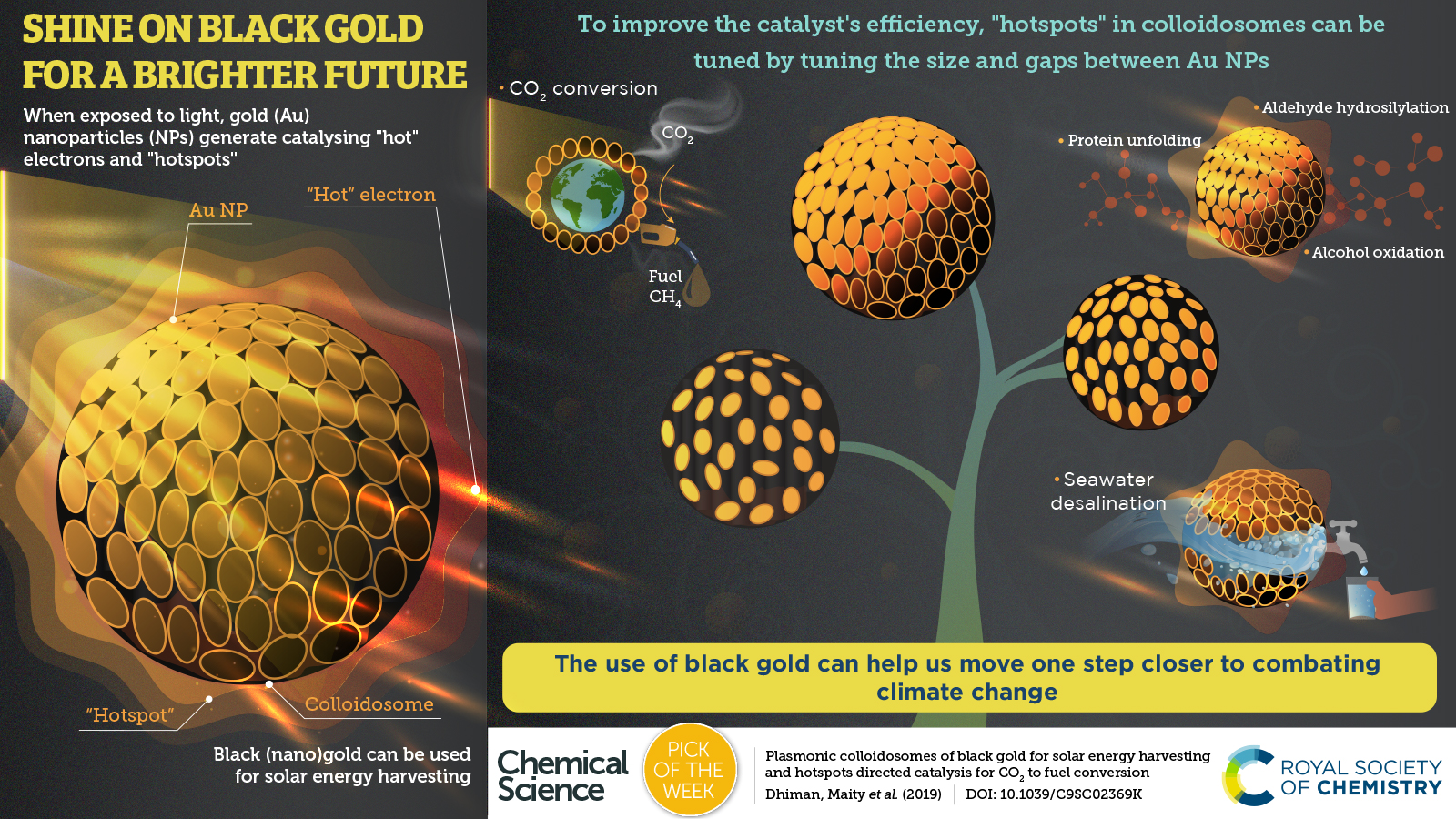Turning black gold into artificial trees
A “black” gold material has been developed to harvest sunlight, and then use the energy to turn carbon dioxide (CO2) into useful chemicals and fuel.

Picture: © Editage/Royal Society of Chemistry
In addition to this, the material can also be used for applications including water purification, heating – and could help further research into new, efficient catalysts.
"In this work, by using the techniques of nanotechnology, we transformed golden gold to black gold, by simply changing the size and gaps between gold nanoparticles," said Professor Vivek Polshettiwar from Tata Institute of Fundamental Research (TIFR) in India.
Tuning the size and gaps between gold nanoparticles created thermal and electromagnetic hotspots, which allowed the material to absorb the entire visible and near-infrared region of sunlight’s wavelength – making the gold "black".
The team of researchers, from TIFR and Seoul National University in South Korea, then demonstrated that this captured energy could be used to combat climate change.
Professor Polshettiwar said: "It not only harvests solar energy but also captures and converts CO2 to methane (fuel). Synthesis and use of black gold for CO2-to-fuel conversion, which is reported for the first time, has the potential to resolve the global CO2 challenge.
"Now, like real trees which use CO2, sunlight and water to produce food, our developed black gold acts like an artificial tree to produce fuel – which we can use to run our cars," he added.
Although production is low at this stage, Professor Polshettiwar (who was included in the RSC’s 175 Faces of Chemistry) believes that the commercially-viable conversion of CO2 to fuel at atmospheric conditions is possible in the coming years.
He said: "It’s the only goal of my life – to develop technology to capture and convert CO2 and combat climate change, by using the concepts of nanotechnology."
Other experiments described in the Chemical Science paper demonstrate using black gold to efficiently convert sea water into drinkable water via steam generation.
It was also used for protein unfolding, alcohol oxidation, and aldehyde hydrosilylation: and the team believe their methodology could lead to novel and efficient catalysts for a range of chemical transformations.
This article is free to read in our open access, flagship journal Chemical Science: Mahak Dhiman, Ayan Maity et al., Chem. Sci., 2019, Advance Article. DOI: 10.1039/C9SC02369K. You can access our 2019 ChemSci Picks in this article collection.